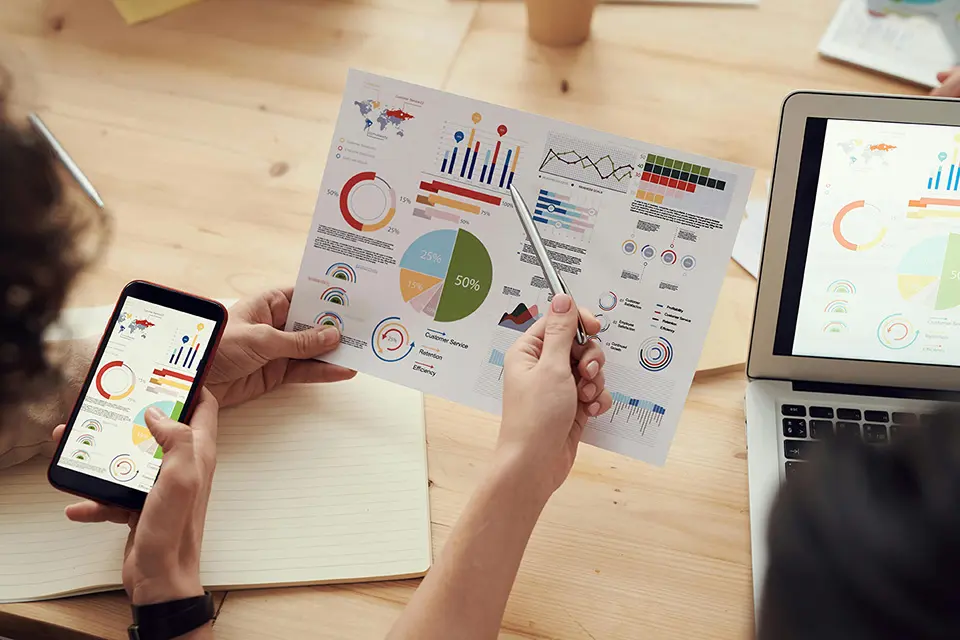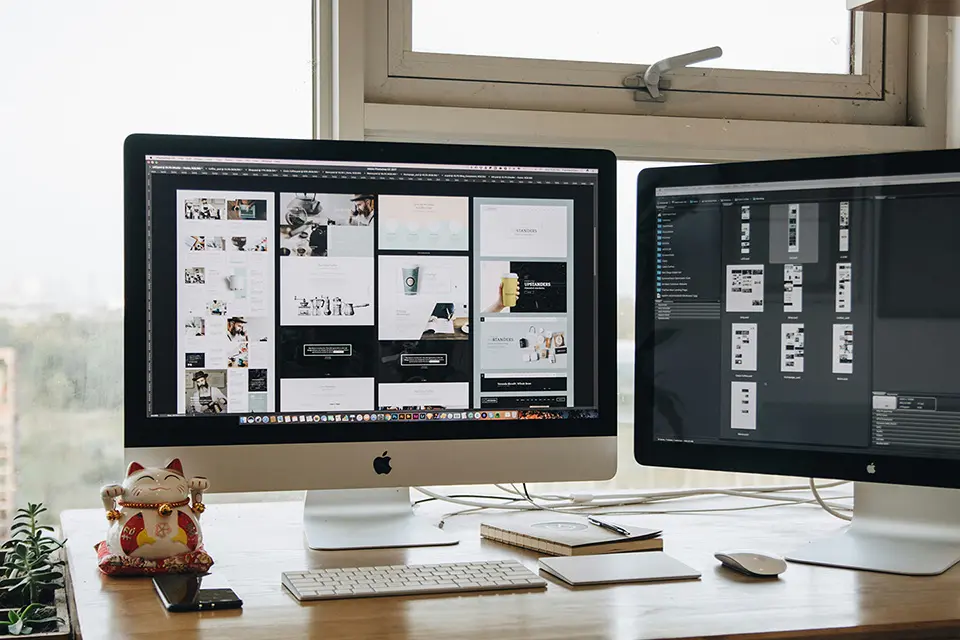Why custom creatives outperform AI-generated ads

As AI tools for image and ad generation have become more accessible, many marketers gravitated to quick, low-cost creative generation. But speed and scale aren’t the same as effectiveness. This guide explains why custom, human-crafted ad creatives still outperform AI-generated ads on brand fit, originality, and long-term marketing ROI — and how to get the best results by combining the strengths of both.
The current AI craze: fast, cheap, but not always effective
What AI does well (and where it falls short)
Generative AI excels at producing lots of iterations quickly. For routine tasks or inspiration, that’s powerful: you can generate many variants in minutes, test micro-changes, and spot-check styles. But advertising is not only about variations — it’s about brand voice, contextual nuance, cultural sensitivity, and storytelling over time. AI models tend to average across their training data, which can produce generic outputs that lack the brand specificity and creative risk-taking that win attention and trust.
The danger of generic creative
When many advertisers use similar prompt engineering or the same public datasets, their outputs can converge. The result? Ads that look and feel similar to dozens of others in the market — the exact opposite of what brands need to stand out. Research and industry analysis repeatedly show that creative distinctiveness is a major driver of ad performance; losing distinctiveness can erode clickthrough rates, engagement, and long-term brand equity. (SCIRP)
Why human-crafted creatives still win
1) Brand alignment and nuance
A human designer reads your brief, understands brand history, target audience subtleties, legal considerations, and recent campaign learnings. They can translate a product’s differentiators into visual and verbal cues that AI — which doesn’t “know” your brand — cannot reliably produce. Custom creatives can incorporate small but meaningful brand rules (tone, micro-animation style, logo safe zones, type treatment) that ensure visual coherence across channels.
2) Originality and visual risk
True originality often requires creative decisions that break rules in the right way — an instinct or taste that teams build over time. Designers take calculated creative risks (unexpected composition, unique storytelling devices, clever copy hooks) that help ads cut through. AI’s tendency to average makes it conservative by design — safer but less memorable.
3) Cultural and contextual intelligence
Cultural relevancy matters. Human teams with lived experience or regional expertise can craft messages that resonate in different markets without accidentally offending or missing local cues. AI systems trained on global datasets may miss local idioms, sentiment, or regulatory nuances. That’s critical for multiregional campaigns and industry verticals where tone and phrasing matter.
4) Long-term brand building vs short-term optimization
Short-term clicks are useful — but brand equity compounds. Human-designed campaigns are frequently conceived as series or systems (sequenced messaging, storytelling arcs, creative refresh cadence). Those structural choices help improve both short-term performance and long-term recognition. AI can generate single assets fast, but it rarely provides a cohesive creative framework that builds brand memory over months or years.
Evidence and industry signal: creative quality drives performance
Creative quality isn’t optional
Industry research and advertising authorities repeatedly call out creative as the single biggest influence on ad effectiveness. While AI may reduce production costs, multiple studies and industry commentary show that creative quality and distinctiveness are the primary drivers of ad impact on attention, recall, and conversion. If creative quality drops, more impressions and impressions volume won’t compensate for poor creative. (SCIRP)
What advertisers observe in practice
Teams using AI-only creative pipelines often report initial volume gains but face diminishing returns: ad fatigue sets in faster, engagement drops, and the cost to recover performance — by reintroducing distinctive creative — grows. Conversely, campaigns that invest in tailored creatives (even if fewer in number) often show stronger CTRs and better downstream KPIs when the creatives are on-brand and targeted.
Where AI helps — and how to blend the two approaches
Use AI where it accelerates, not replaces
AI tools are excellent for:
- Rapid ideation and mood-boarding
- Generating experimental visual directions for internal review
- Producing mockups to test copy variations quickly
- Automated resizing, format conversions, and technical optimizations
But treat those outputs as raw material — the start of a creative process — not the finished product. The best results come when designers refine and humanize AI outputs with brand rules, tone alignment, and intentional storytelling.
A practical hybrid workflow
- Brief: human sets objectives, target audience, brand constraints.
- Ideation: AI generates multiple visual directions.
- Curation: designers pick promising directions and refine them — adjust composition, craft copy, ensure accessibility, test culturally.
- Production: final assets produced to spec (static, GIF, HTML5, short-form video) and tested across placements.
- Measurement and refresh: track performance, then iterate with new variants and strategic creative refreshes.
This loop preserves AI’s speed while keeping human judgment where it matters.
Specific creative formats: why custom matters for banner ads
Static image ads & brand clarity
Static image ads are often the first brand contact in many funnels. A single frame must communicate brand, proposition, and CTA with pixel-perfect clarity. Off-the-shelf AI imagery struggles to match brand consistency across a full set of sizes.
Animated GIF/WebP — timing and storytelling
Motion introduces timing, sequencing, and copy choreography. Designers craft frame pacing and transitions to direct attention, something AI doesn’t yet strategize on its own.
HTML5 & interactive creatives — interplay is everything
HTML5 ads allow interaction and dynamic content. The logic, UX and micro-interactions require deliberate design and testing. These aren’t a few static frames patched together; they’re engineered experiences that must be performant and compliant with ad platform policies. That is squarely in the human domain.
Social video — trends + authenticity
Short-form video rewards authentic hooks and native format thinking. A human-led approach captures platform trends, influencer sensibilities, and brand voice in a way AI-generated stock-style videos rarely can.
Practical tips to get better results
1) Provide a clear creative brief
The more precise the brief (audience, tone, examples, banned elements, primary message), the less “guesswork” designers must do and the better the initial drafts will be. If you plan to use AI for ideation, feed the brief into the prompting step.
2) Treat AI as a creative assistant, not a designer
Use AI to expand options quickly; rely on designers to make the final decisions about brand, nuance, and testing protocol.
3) Invest in creative systems
Design systems (type, color, motion grammar) make it easier to produce consistent variations across formats and languages — and they allow faster iteration when an asset needs to be refreshed.
4) Measure both short- and long-term metrics
Look beyond last-click conversions. Include memory, ad recall, and brand lift tests to capture the full value of distinct creative.
Final thought: human creativity still drives value
AI is a powerful tool, but it’s not a shortcut to brand differentiation. For companies that want to stand out rather than blend in, investing in human creatives — or a hybrid approach that places humans in the loop — is the smart path. Custom creatives deliver brand fit, originality, and strategic storytelling that AI cannot reliably replicate at scale. Use AI to augment speed and ideation — but keep human creative leadership in charge of brand decisions.
Sources & further reading
- Research on human vs AI creative capabilities and cultural bias, Science Publishing Group. (SCIRP)
- "AI-Generated 'Workslop' Is Destroying Productivity" — Harvard Business Review, Sept 22, 2025 (analysis on AI output quality and organizational impact). (Harvard Business Review)


